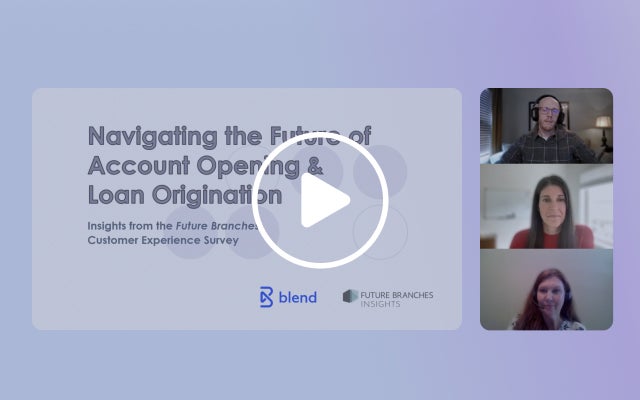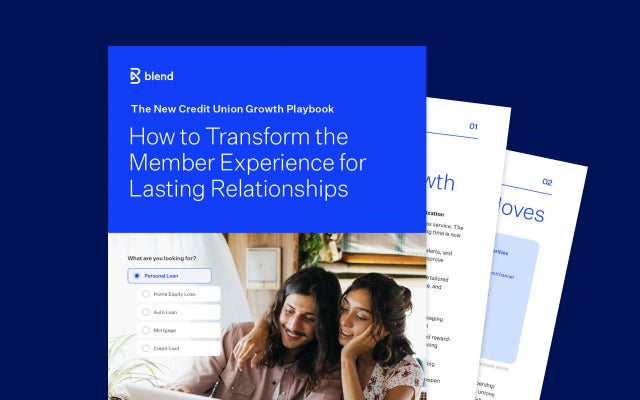August 11, 2020 in Challenges and solutions
A customer-centric lens for addressing application drop-off

Although the various technical hurdles impacting application drop-off can feel daunting, recentering the challenges on something you know well — the customer — can help.
The good news is that according to McKinsey, “most consumers already seek information on financial products on digital channels.” The bad news is that “few institutions are highly effective at converting these inquiries into digital sales.” Those leading institutions that find success here have adopted tactics pioneered by digital-native companies in sectors such as e-commerce, travel, and entertainment.
By supporting customers anytime and anywhere, creating experiences that delight, and revealing an intuitive understanding of their needs through every interaction, financial institutions can make significant progress toward the gold standard of consistently high-converting experiences.
Over the years, we’ve paid close attention to the moments that deliver something special for consumers. The following five principles shape the way we design our Digital Lending Platform.
Tackle application drop-off with five customer-centric principles
Use these five markers of a differentiated experience to help delight customers and improve submission rates.
1. Support customers wherever they are
Because customers expect to be able to get things done on their mobile devices as well as on their computers, implementing channel flexibility signals to them that you care about their demands.
One of the best paths to channel flexibility is responsive web design. According to Celent, this approach both simplifies application maintenance and even outperforms offering a dedicated mobile app.
Delighting customers with this level of convenience across channels and at every touchpoint can create an overall positive brand image that builds loyalty beyond the application.
2. Respect customers’ time and attention
People are feeling more pressed for time than ever. Real-time, swift interaction is the new expectation. Reducing your application form length by even one field could increase submission rates while keeping customers happy.
One way to address this is by creating variable form lengths for certain products that can support flexibility. For example, you might choose to have your standard HELOC application omit asset-collection steps, and have a different HELOC application flow with asset fields intact targeted at borrowers who have large assets and low income.
Taking a few simple steps to speed up the application process for customers can improve the chance they finish, and ideally, make them more likely to begin another application in the future.
3. Make customers feel known
Customers should not feel like strangers when they apply. They don’t want to waste time re-telling you things they think you should already know. They expect your organization to learn about them over time and to ensure all areas of the institution are in the loop.
Automation, ranging from data deduplication to connections to financial accounts, helps make customers feel valued by reducing the effort needed to complete the application. By using automation, you can impress customers with a more seamless experience and a stronger personal connection.
4. Align processes with the stop-and-start realities of daily life
People are busy. Amidst hectic schedules and non-stop working, it can be difficult to complete an application and the required follow-ups all at once.
Overarching strategies that are supportive of daily realities — including providing what customers need right at their fingertips, no matter where they are — signals that you understand what they are going through and that you’re willing to do something about it.
In the same way that minimizing re-inputting of previously provided information makes customers feel known, offering the ability to connect directly to financial accounts (tax, payroll, assets) signals that you anticipate their frustrations and can solve them. Anyone who has survived the incessant back and forth of email document follow-ups will likely be extremely grateful.
5. Provide a guiding hand, digital or otherwise
Lending experiences are simultaneously nerve-wracking and overflowing with excitement. Financial institutions have an opportunity to minimize doubt and maximize positivity by acting as a guiding force through the process.
Guidance doesn’t always require personal engagement — a persistent progress bar on every application page highlights for customers what step they’re on can also do the trick. In addition to automated progress tracking, features such as live chat, the option to schedule a call, an always-on help center, or digital co-piloting offer customers a lifeline when the process begins to feel overwhelming.
By providing the continuous support customers need to make progress against their goals, you’ll keep them motivated to finish.
Improve lending application submission rates
Now that you know five best practices to implement, set a north star goal related to bringing a customer-first digital application experience to life. According to PWC, “Banks should reorganize around customers instead of products or channels; offer a seamless customer experience, integrating sales and service across all channels; and develop the ability to view customers as a ‘segment of one’, recognizing their uniqueness, and tailoring their offerings.”
Look to create a lending application design that carries context across channels, taps into consumer habits reinforced by other industries, and creates a journey that matters most for digital-first customers — not just digital-only customers. You may be rewarded with less application drop-off, increased customer loyalty, and as a result, additional revenue.

Learn more about pre-empting application drop-off
Find out what we're up to!
Subscribe to get Blend news, customer stories, events, and industry insights.


